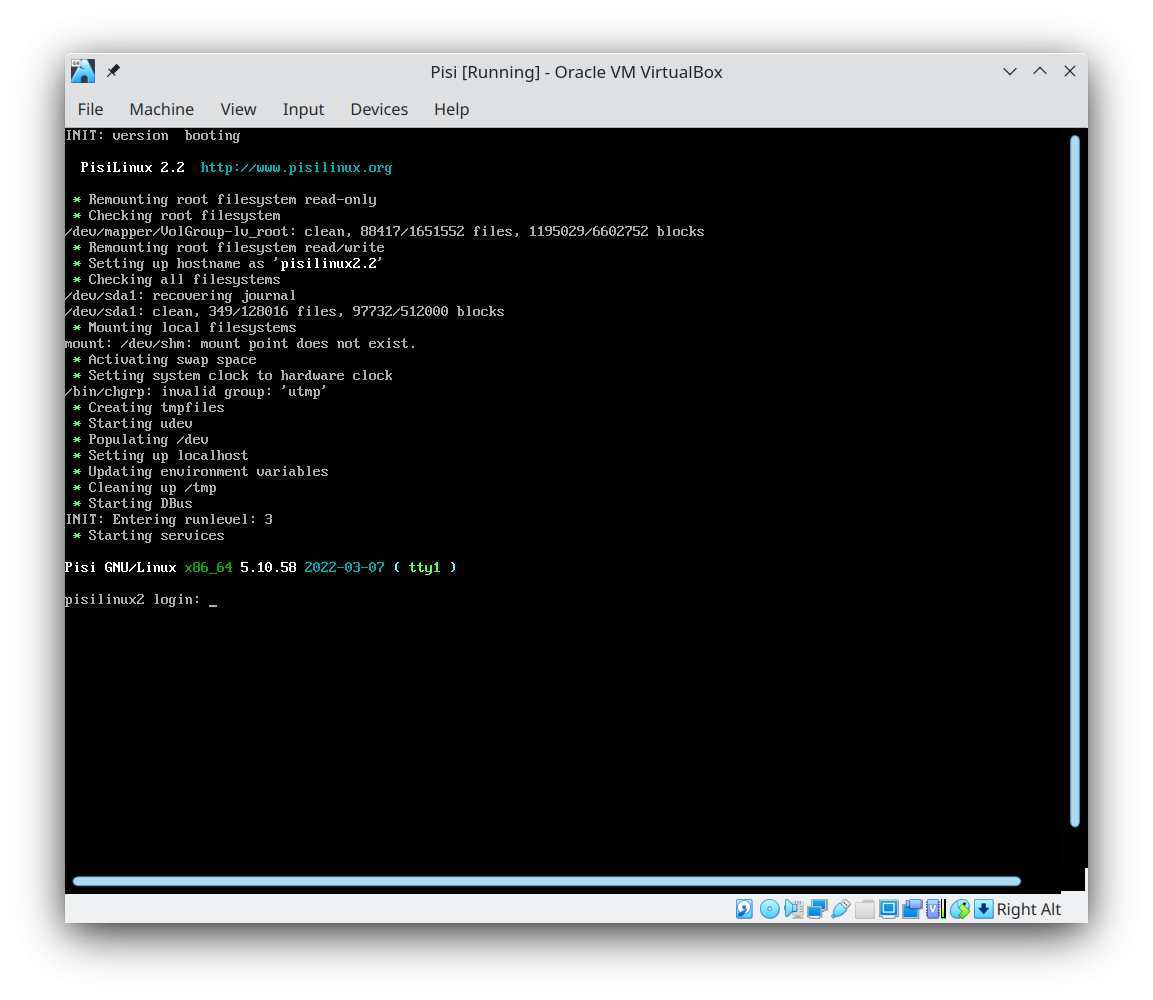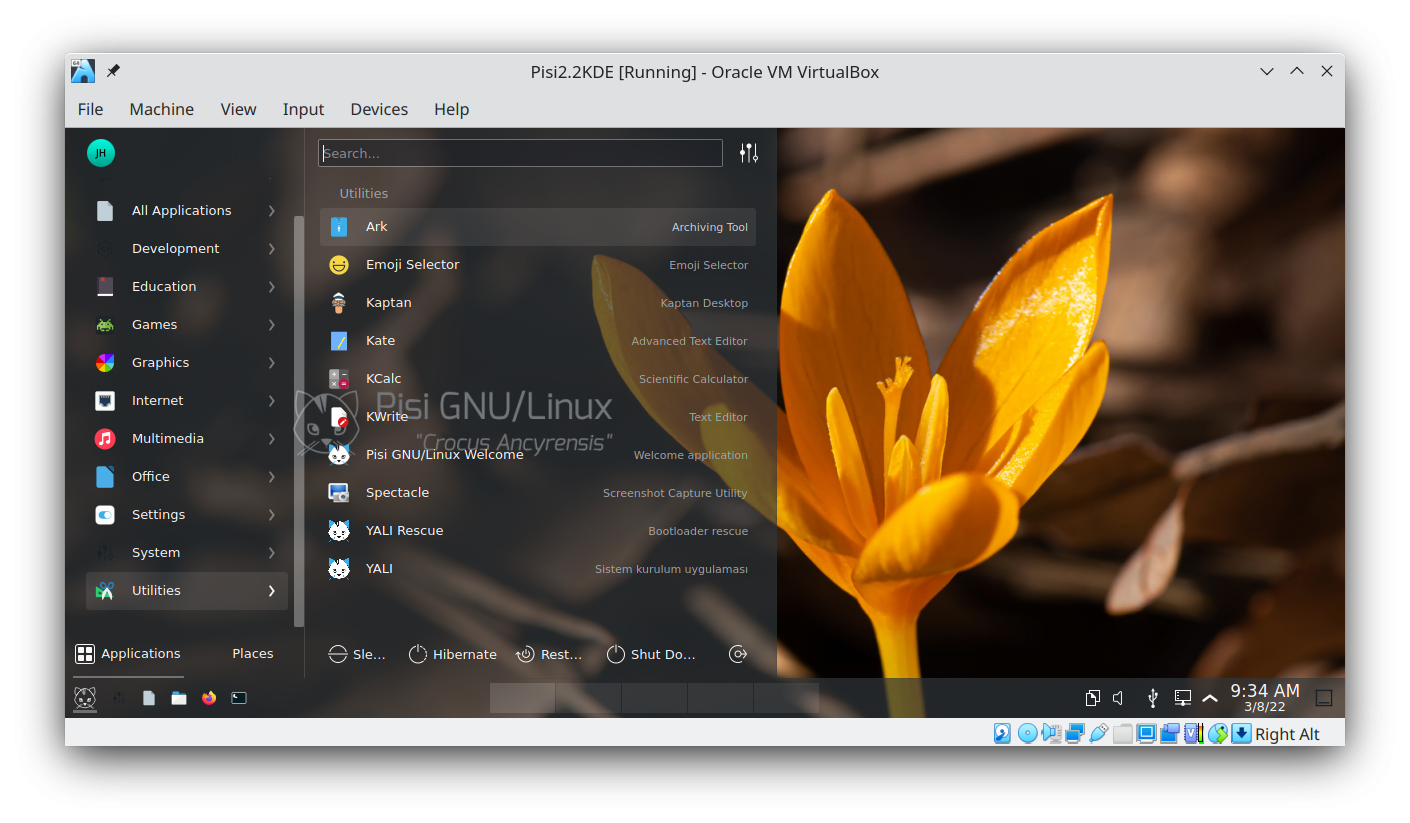Would go with Linux Mint
If not solus, what distro would you be using
Before using solus, I used gentoo and debian for daily driver and put on server
- Edited
A few days ago I tried with a USB a distro that is kinda related to Solus, Pisi Linux (eopkg is a fork of the pisi package manager), and I liked a lot what I saw, it felt fluid and simple, reminded me of Solus. Apparently it's not rolling release, but the software was quite up to date, Firefox 97.0.1, Chromium 98, KDE Plasma 5.24.2, it even had Budgie in the repository, for the Budgie lovers!!
I have uninstalled Solus several times (the distrohopping spirit is strong in me) and I have always regretted it, so I don't think I'm going to do it this time. But I'd like to try this distro some day.
joluveba the distrohopping spirit is strong in me
It'a a lot easier to support a distrohopping habit if you use virtual machines. If it's not something you've tried yet, and you'd like to, just know that there are lots of us in the forum who would be happy to help you get started.
I think I'll create a VM to take a look at Pisi. Not looking to replace Solus on any machine I use every day, but I'm curious about what other distros are doing with Budgie. That was my first love when I found Solus!
I always end up on Solus Gnome for my daily driver. I've borrowed a lot from Zorin for my desktop and I like that distro but I just find Solus faster for what I do. An example is the intolerable delay in accessing network shares using Zorin and many other distros.
I'm running Zorin on an HTPC that I am testing out as a replacement for all those Android personal-information-distribution boxes, and I use MX Linux on my media server. (XFCE+gnome disks and nautilus).
I was using Elementary for a week last month and it was okay but still the speed issue comes up.
WetGeek I think I'll create a VM to take a look at Pisi
@joluveba , I did that, and here's as far as I've gotten so far:

When I logged on, I was taken to tty1. I executed startx, but that didn't get me to a GUI. I'm sure Pisi supports a GUI, because it includes applications like Firefox, but I don't know how to get there yet.
Any help appreciated!
WetGeek I don't know how to get there yet
About all I could think of doing was learning a little more about the pisi application. I was surprised at how much it feels like eopkg, even thought I knew a bit about their shared history. Invoking pisi up got me 141 package upgrades, and the output left me thinking I was watching an eopkg update.
Pisi is the package manager from Pardus... I didn't know Pardus also had a derivative named Pisi until now, it's a bit confusing!
synth-ruiner it's a bit confusing!
Yeah, but a lot of fun to explore these distros!
synth-ruiner Pisi is the package manager from Pardus... I didn't know Pardus also had a derivative named Pisi until now, it's a bit confusing!
The old Pardus was an independent distro, with the pisi package manager. But that changed, modern Pardus is a Debian derivative , and uses apt. As you can expect, some people missed the old Pardus, and wanted to resurrect it, just like the Gnome2 Mate situation. They wanted to call it Pardus-Anka (anka is phoenix in Turkish), but finally called it Pisi Linux. Pisi Linux is supposedly what the old Pardus was, whereas modern Pardus is Debian under the hood.
- Edited
murbert I think you installed the minimal ISO. No DE on that one. Do a Pisi search for plasma and see if you can install the DE
Yes, there is an ISO with KDE, which is what I used
EDIT: in the former post, I forgot posting this interesting piece of history (it's in English, despite the Spanish url):
joluveba Yes, there is an ISO with KDE, which is what I used
On the Pisi download page,I could find only two options: the "minimal" version I used, and an older option that was marked "beta." Where should I look for the KDE download option?
I think I've done everything I can do with the CLI, and I'd love to try the GUI version. Thanks!
joluveba Budgie is in their repo.
I'll download that second file and give it a try. If it had said anything about offering a GUI, I would have started with that.
The description of 2.2.i Minimal includes: "you can install it and install the desktop you want", so that's what I was trying to figure out. I installed budgie-deskop using pisi, but could find no way to use it.
Since I use Plasma on Solus, that DE will work fine for further exploration. Thanks again!
joluveba I downloaded the second one, 2.2 Beta. It comes with KDE Plasma.

There were a few non-obvious hoops to jump through, but all my guesses turned out to be correct, and I got Pisi running with Plasma in a new VM. The toughest hoop was discovering that the YALI installer is listed in "Favorites," and I needed to find that and run it. There's no icon or link saying "Install" as there is in other live ISOs I've used.
Once I figured that out, it was easy from there. The installer is very straight-forward, and seemed very much like Solus' installer. Hmmm ... I'll bet they're related, or both are descendants of the same ancestor installer. 
In order to install VirtualBox's Linux Guest Additions, I needed to run Dolphin as root from the terminal. And if anyone else needs to do that, be aware that the application name is simply "dolphin".
Now I can use it full-screen, and get on with some serious configuration. This has been a very pleasant adventure so far.
- Edited
WetGeek This has been a very pleasant adventure so far.
If anyone has been following this thread with interest, I'll mention a few first impressions. A lot of other distros have been described as "like Solus, or "similar to Solus," but none that I've tried actually were. A close contender was Gecko, I guess, based on openSUSE. I created a VM to explore Gecko, but I couldn't get much to work for me. Dunno if it just hates to run on VMs or it just isn't ready for prime time yet.
Pisi (Turkish for "cat") however, although it's a beta at this time, seems more like an RC to me. And so far, it seems to provide a very good implementation of KDE Plasma. If you go to the Download section of the Pisi web site,be sure to download the second .ISO file (v2.2). The first one is, as it says, a "minimal" version. I.e., no desktop despite appearing to be newer (v2.2.1).
The Pisi .ISO creates a live version of the distro when it's executed. Once it's started, F2 will allow you to change the language from the default (Turkish) to whatever works better for you. And in order to install it, look for the YALI installer in the ISO's "Favorites" menu.
If you install this on a VirtualBox VM as I did, in order to load the Linux Guest Additions so you can take it full-screen, you'll need to start a terminal and load Dolphin with elevated credentials. The application name is just "dolphin," so the command is sudo dolphin. Once it's up, you can locate the .run script to load the Linux modules. Run that, then reboot, and now Host + F will make the VM full-screen.
Everything I've seen so far confirms that eopkg and pisi (the Pisi package manager) are very closely related. From a command line, every eopkg command I've tried with pisi has worked just fine. I just ran the command sudo pisi up, and got 566 package upgrades. The whole process looked exactly like an eopkg update.
I posted the sizes of my VMs recently, so I checked to see how Pisi compares. In fact, it's not tiny. The amount of space it's currently using of its 32GB dynamic virtual disk is 11.57GB, almost twice the size of the Solus Plasma VM. In fact, it's just slightly bigger than my Windows 10 Pro VM! Keep in mind, though, that if this is really still a beta version, it will probably get much smaller in a release build.
IN SUMMARY
For those who like to explore interesting distros, Pisi is certainly one you'd enjoy taking a look at.
- Edited
WetGeek Pisi is certainly one you'd enjoy taking a look at
FOLLOWUP
While in the KDE session, you can load the Budgie DE with this command: sudo pisi it budgie-desktop. Then reboot, and Budgie will show up together with KDE Plasma as an option on the login screen.
Unfurtunately I wasn't able to actually try Budgie on Pisi, because every attempt to log on to a Budgie session failed. That's the first beta-like problem I've seen so far from this beta OS. Hopefully it'll be fixed before long. Maybe in time for Budgie 10.6.
EDIT: Unlike openSUSE and Gecko, Pisi DOES have Vivaldi available for installation. The pisi command is just sudo pisi it vivaldi-browser.
joluveba (it's in English, despite the Spanish url):
Well, it's at least similar to English 
Apparently, Ikey is starting to get fed up with developing his distro on Debian due to the work involved in its maintenance, especially in the patched and cleaning packages GNOME3 who break into repositories and threaten to break the desktop of SolusOS, for what you have considered stop developing SolusOS 2 (currently in alpha 5 stage) on top of Debian to rebuild it from scratch, with its own independent repositories, and using the package management system of Pardus, PiSi (what does it mean Packages Installed Successfully as Intended).
